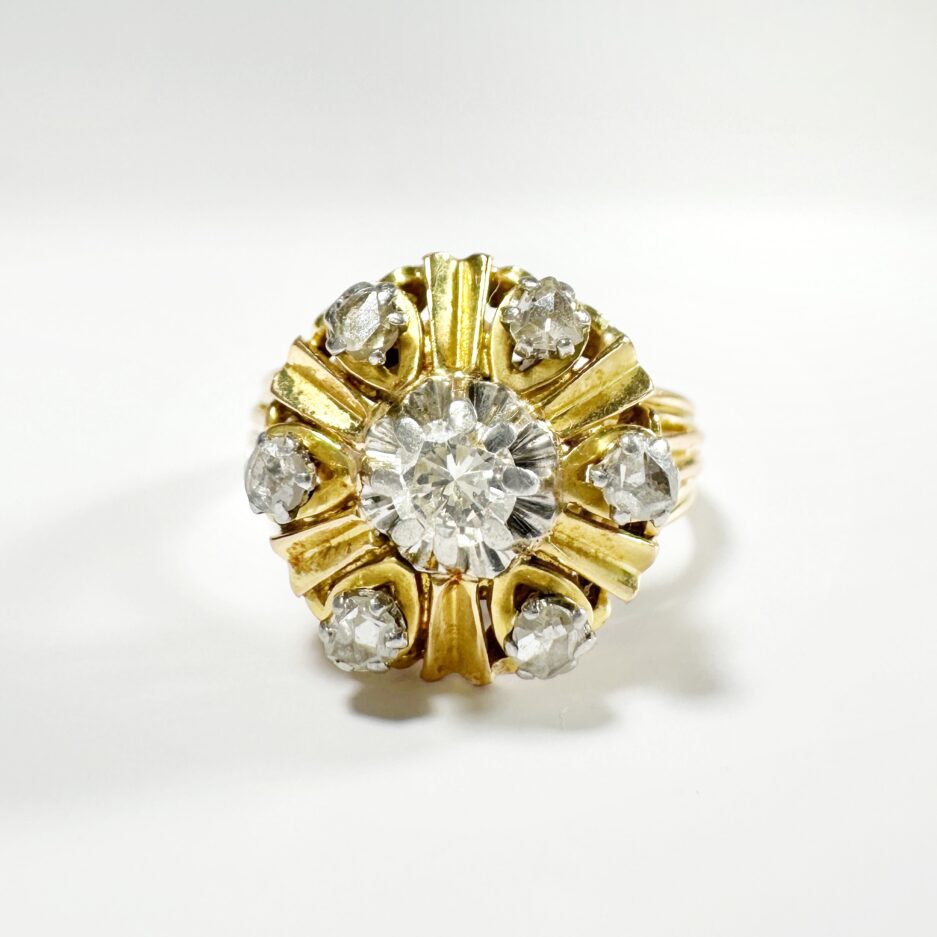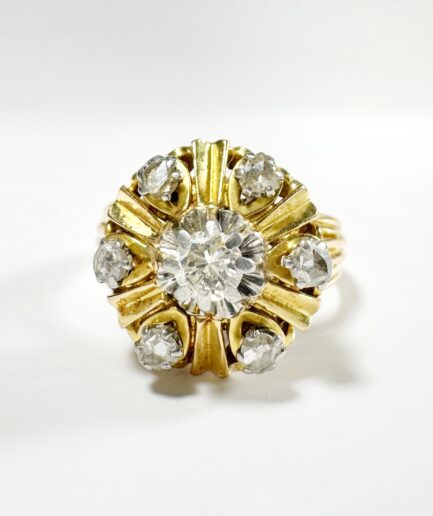Sold
Gold and diamond daisy ring “Dyonne”
$927
Out of stock
- Authenticity
- Secure payment
- Free returns
- Secure delivery
Description
Sublime daisy ring from the end of the 19th century in 18 carat yellow gold set with a central brilliant-cut diamond of 0.15 carats, VVSI clarity and H color (probably the replacement of a rose-cut diamond originally) haloed with 6 rose-cut diamonds of 0.5 carats. These diamonds are set in white gold and arranged in a daisy style on a yellow gold bezel forming a solar motif. On either side of the central motif, three branches come together in a single ring. A bright and sparkling room with a typical charm of the 40s.
Size FR 50 / UK K/ US 5.5
Weight: 4.11 g
This unique piece had a previous life in France
The story: Rose-cut diamonds and modern brilliant-cut diamonds are valuable clues to dating antique jewelry. The rose cut, recognizable by its domed surface and triangular facets, was commonly used from the seventeenth century to the beginning of the twentieth century, before falling into disuse. On the other hand, the modern brilliant cut, which appeared in the 1910s and 1920s and was widely adopted from the 1950s onwards, makes it possible to identify more recent modifications or creations. The coexistence of these two types of cut in the same piece of jewelry often suggests an old piece that has been reworked or modernized over time.
Style: Antique and vintage ringsTag: Great Treasures
Metal: 18-carat gold, Gold (all titles)Rock: DiamondEra: 19th century jewelryWedding: Antique and vintage engagement ringsGender: Women antique and vintage jewelry
 en
en
 Français
Français











